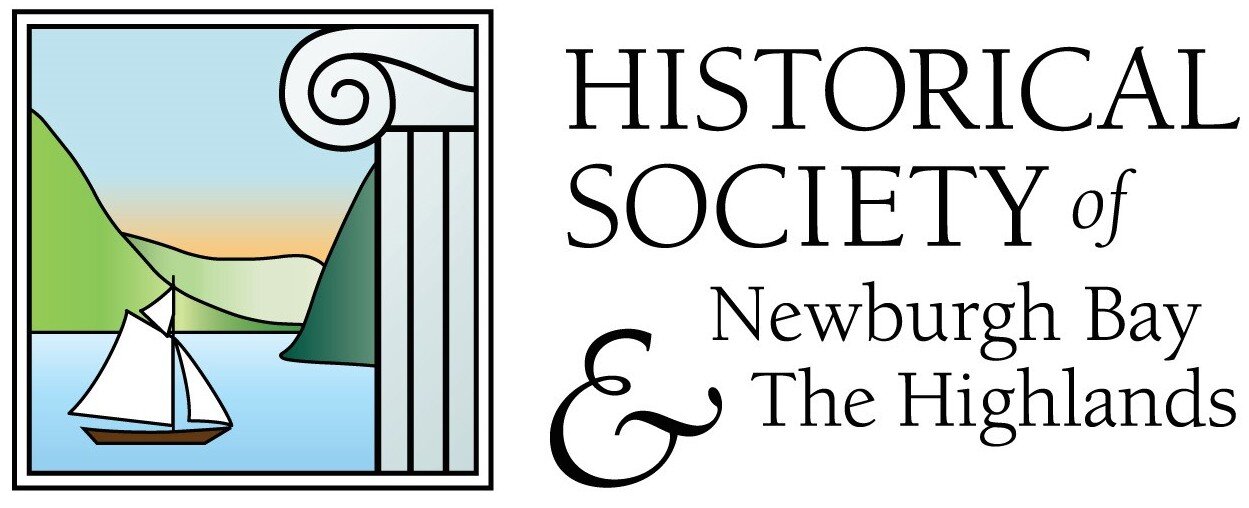The Way West
Fall foliage is just passing its splendid peak of perfect colors. Anyone I walk or ride with can’t help pointing to an especially vibrant shade of red or orange as leaves flutter to the ground. It is a time when, despite the need to conserve fuel and avoid gas expenses, people can’t help one or two rides into the countryside. When relatives from abroad visited recently and wanted to take a short trip to test out their rental car, they went west along the two-lane highways that pass hills and farms and reveal the beauty of Orange County. They came back amazed at the extent of our natural resources.
A typical scene in the Highlands when sheep pastured on many farms.
This trip west from Newburgh and back again mimics the trips taken from the beginning of our settlement. From 16th century seasonal villages, the Waoranek band of the Lenape people migrated along paths established through the dense woods to open fields inland along landmarks like the Wallkill River. They must have marveled at the splendid autumn colors too. Once Europeans established a permanent village here on the Hudson, they needed to communicate with other growing settlements inland. Goods from central Orange County farms needed a market outlet and the Hudson River at Newburgh was the best place to collect both farm produce and live animals and ship them down river to larger populations who would buy them for the most profitable price. That is why our main street is so wide: it was a “drover’s road,” a road laid out eight rods (lanes) wide to accommodate horse and wagon and herd traffic simultaneously. It was first called The Western Avenue being the broad avenue that everyone used, including cattle (sheep, pigs, cows), to go to and from the inland farms to the west – the same farmland that now impresses us with its pristine beauty during our pleasure drives.
Roads to and from Newburgh’s shore were privately developed because road building was an expensive proposition at the turn of the 19th century. Investors were needed to get a road project started and tolls were collected to keep the project growing and to maintain what was built. Driving along on blacktop today, it is hard to envision how difficult the passage on roads like Route 17K, Route 32 or Route 52 were 200 years ago. Those routes we have now numbered for modern-day roadmaps were opened as named roads – The Cochecton Turnpike, South Plank Road and North Plank Road. Turnpike refers to any road where a toll was collected at a turnstile or tollbooth. To ride toward Cochecton (a town on the Delaware River and the terminus of the Newburgh-Cochecton Turnpike) one needed to pay along the way at tollhouses where the gatekeeper lived and collected a few cents from each traveler based on the size of his vehicle and load. Plank Roads were so named for the obvious type of construction, namely the need to lay wooden planks or logs over rough or swampy regions to facilitate travel, especially by wheeled vehicles. To build roads through the countryside meant acquiring not only some rights-of-way along farms but also some parcels of wilderness. Woods, marshes and rocky hills needed to be shaped into contours that horses could navigate and pull loaded wagons or sleds across. Roads were mostly packed dirt with some gravel and some planking made of cut logs. This log surface was called corduroy and the ridged fabric we call corduroy today gets its name from its resemblance to these early cordwood roads.
Road crews who worked to clear, flatten and surface the roads included all ages and genders, even children. Steady work was hard to come by at the turn of the 19th century and many families, including widows and their children, found part-time work digging or moving stones along a turnpike construction route.
The old Newburgh & Cochecton Turnpike, circa 1900.
Newburgh citizens were leaders in road building in Orange County. That is natural because they were businessmen promoting their services as freight forwarders at the port of Newburgh. The Village of Newburgh was incorporated in 1800 and the first order of business for its leaders was opening routes to make it an attractive port. By March of 1801, they had raised investment capital of $126,000 to begin a road to connect the Hudson and the Delaware rivers. The new road, as it developed, served not only Orange County but the southern tier counties where goods could be floated down the Delaware to Cochecton then transported by land to the larger and better markets available from the shores of the Hudson at Newburgh.
The golden age of road building lasted until the arrival of the canal system in 1825 and the investments in roads that fanned out from Newburgh was astounding when set in the economy and dollar value of its day. These figures testify to Newburgh’s early 19th century prosperity. After the $126,000 invested in the Cochecton Turnpike, $5,000 was spent to make a turnpike to New Windsor. Its tollbooth was right where the Quassaick Creek now flows under River Road at Walsh Avenue. Then $90,000 was spent on the Newburgh-Ulster Turnpike, $35,000 on the Newburgh and Sullivan Turnpike, $14,000 on the Newburgh and Plattekill Turnpike, and $14,000 on the Snake Hill Turnpike, making well over a quarter of a million dollars invested in Newburgh area roads before 1820. Pretty impressive for a village of 2,800 people!


